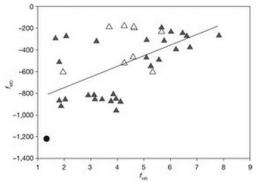March 22, 2012 report
Study shows insect mimic abilities related to size

(PhysOrg.com) -- A group of Canadian researchers who found themselves wondering why some plants or animals are good mimics while others are not, has undertaken a study on the matter and believe they have found the answer. They suggest, as they write in their paper published in Nature, that it has to do with size. The bigger they are, the more payoff for those that wish to eat them, thus the need for better mimicry skills.
To come to this conclusion, the team looked at five informal hypothesis that have been tossed around in the scientific community to explain the differences in mimicry skills displayed by different plants or animals, tested each and found holes in all of them but one. Size.
To carry out their testing, the team focused on the 18 different species of the hoverfly. This was a good choice because some species are very good at imitating bees or wasps and some are not. Also, they come in a variety of shapes and sizes.
One of the first challenges was to come up with a way to measure just how closely a hoverfly resembled the bee or wasp it was supposed to look like. To do this they showed photographs to volunteer humans who graded them on a scale of one to ten. They then merged those results with physical measurements taken of both the hoverflies and the bees or wasps they most looked like, to arrive at a score for each species.
One of the theories that the researchers tested was the idea that what we humans see as poor mimicry skills may not be so for the predators that may wish to eat them. Another is that those that have poor skills wind up representing the worst of a group of different species, resulting in the appearance of an unappetizing meal.
In reality, none of these ideas seemed to hold much water, as the team found that what really mattered was size. The bigger the bug, the better it was at mimicking a bee or wasp. Smaller hoverflies don’t need to be very good at looking like a bee or wasp that might sting birds that wish to eat them, because they don’t represent much payoff. Thus birds looking for a meal don’t bother looking very hard at them. If there is any chance of being stung, they simply move on. Larger hoverflies on the other hand, are worth a second or third look, thus they better be much more convincing.
More information: A comparative analysis of the evolution of imperfect mimicry, Nature 483, 461–464 (22 March 2012) doi:10.1038/nature10961
Abstract
Although exceptional examples of adaptation are frequently celebrated, some outcomes of natural selection seem far from perfect. For example, many hoverflies (Diptera: Syrphidae) are harmless (Batesian) mimics of stinging Hymenoptera. However, although some hoverfly species are considered excellent mimics, other species bear only a superficial resemblance to their models and it is unclear why this is so. To evaluate hypotheses that have been put forward to explain interspecific variation in the mimetic fidelity of Palearctic Syrphidae we use a comparative approach. We show that the most plausible explanation is that predators impose less selection for mimetic fidelity on smaller hoverfly species because they are less profitable prey items. In particular, our findings, in combination with previous results, allow us to reject several key hypotheses for imperfect mimicry: first, human ratings of mimetic fidelity are positively correlated with both morphometric measures and avian rankings, indicating that variation in mimetic fidelity is not simply an illusion based on human perception; second, no species of syrphid maps out in multidimensional space as being intermediate in appearance between several different hymenopteran model species, as the multimodel hypothesis requires; and third, we find no evidence for a negative relationship between mimetic fidelity and abundance, which calls into question the kin-selection hypothesis. By contrast, a strong positive relationship between mimetic fidelity and body size supports the relaxed-selection hypothesis, suggesting that reduced predation pressure on less profitable prey species limits the selection for mimetic perfection.
Journal information: Nature
© 2011 PhysOrg.com




















